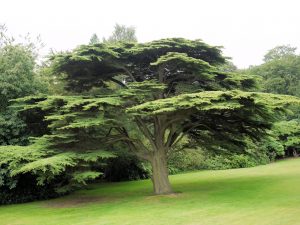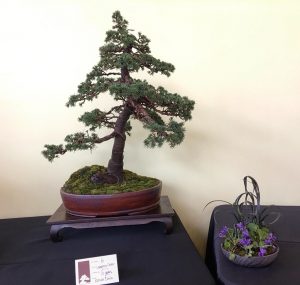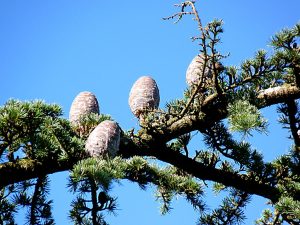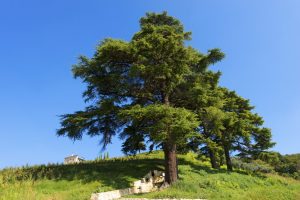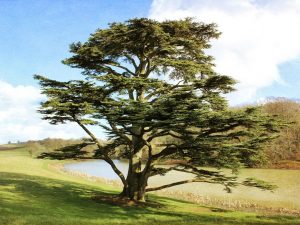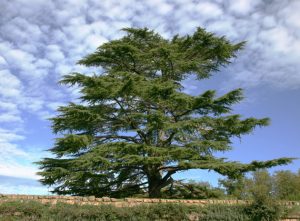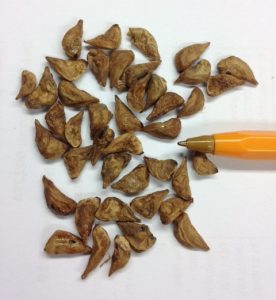Cedar Tree of Lebanon
The cedar of Lebanon, also known as Lebanon cedar, is a species of tall coniferous trees characterized by large, irregularly shaped heads with spreading branches. It belongs to the Cedrus genus of the Pinaceae family. This cedar species typically grows in the mountainous regions of the Eastern Mediterranean. In Middle Eastern culture, it has great historical and religious significance and has been cited several times in ancient literature.
Scientific Classification
| Kingdom | Plantae |
| Clade | Tracheophytes |
| Division | Pinophyta |
| Class | Pinopsida |
| Order | Pinales |
| Family | Pinaceae |
| Genus | Cedrus |
| Scientific Name | Cedrus libani |
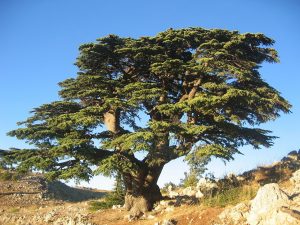
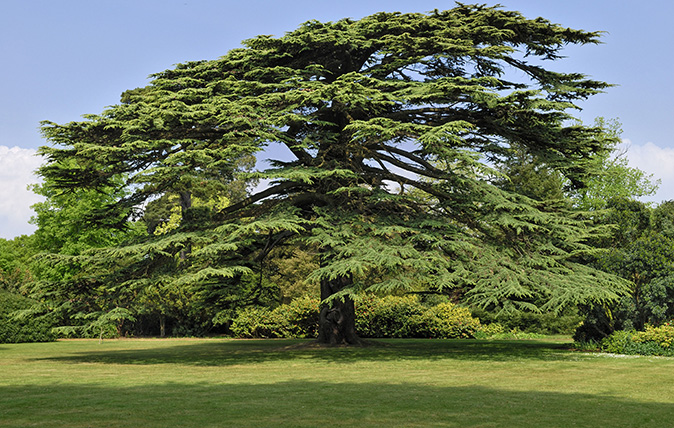
Quick Information
| Tree Type | Evergreen coniferous |
| Identification | Height: Can grow up to 100-130 ft Leaves: Needle-like, spirally-arranged, about 5-35 mm long, and 1-1.5 mm wide Trunk Diameter: 6 ft – 8 ft 2 in Bark: Rough, scaly, dark gray-blackish brown, has horizontal fissures, stripping in small chips Cones: Males are solitary, erect, 4-5 cm long, pale green to light brown; female woody cones are scaly, resinous, barrel-shaped, gray-brown, 8-12 cm long Seeds: Ovoid, 4-6 mm wide, 10-14 mm long, have wedge-shaped wings Branches: Large, erect Crown: Conical when young, broadly flat when matured |
| Distribution | Eastern Mediterranean regions including western Syria, Lebanon, and south-central Turkey |
| Habitat | Grows on rocky slopes and ridges, in pure or mixed forests at altitudes of 500-3,000 m |
| USDA Hardiness Zone | 5b through 10a |
| Growth Rate | Relatively slow, growing at a rate of 12-15 inches per year |
| Lifespan | Long-lived, can live for more than 1,000 years |
| Growing Conditions | Sunlight: Grows in full sun (about six hours of constant sunlight each day) Soil: Light sandy, heavy clay, medium loamy, well-drained, dry to moist Water: Average rainfall, about 40 inches per year |
| Drought Tolerance | Moderate to high |
| Diseases & Pests | Susceptible to fungal diseases like botrytis bunch rot and Armillaria root rot (caused by a honey fungus); some common pests include the Lebanese cedar shoot moth |
| Reproductive System | Monoecious, which means flowers are either female or male but both sexes are found on the same tree |
| Propagation | Through seeds, stem cuttings |
| Wildlife Value | Provides habitat for different invertebrate species, the crevices within the branches and trunks offer nesting places for birds like the tawny owl and roosting sites for bats |
| Uses | Wood from Lebanon cedar is used for construction, handicrafts, and furniture; resins and essential oils, extracted from the wood, leaves, and cones, are used for producing antiseptic ointments and cough medicines; planted as ornamental trees in gardens and parks |
| IUCN Conservation Status | Since its population has been decreasing, it is considered a ‘Vulnerable’ species |
Interesting Facts
- The Lebanon cedar has been conferred the Award of Garden Merit by the Royal Horticulture Society in 2017.
- It appears as the national emblem on the coat of arms and the flag of Lebanon.
- An exceptional Lebanon cedar specimen recognized by the US state of Arkansas, located inside the Hot Springs National Park, is more than 100 years old.
- For increasing the population of Lebanon cedars, the Lebanese authorities have created many reserves, including the Cedars of God, which is an old-growth forest in Bsharri.
References
- https://pfaf.org/user/Plant.aspx?LatinName=Cedrus+libani
- https://hort.ifas.ufl.edu/database/documents/pdf/tree_fact_sheets/cedliba.pdf
- https://www.rhs.org.uk/plants/100314/cedrus-libani/details
- https://cals.arizona.edu/yavapai/anr/hort/byg/archive/cedarsoflebanon2017.html
- https://www.iucnredlist.org/species/46191675/46192926
Published on September 3rd 2020 by admin under Cedar.
Article was last reviewed on 5th December 2022.


